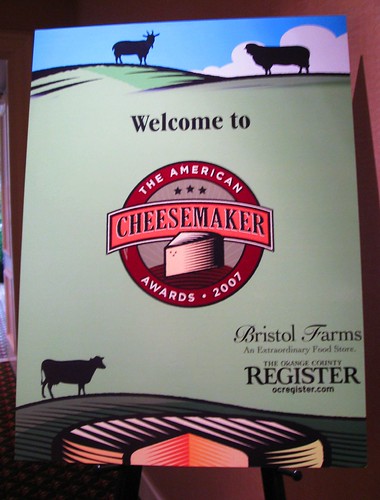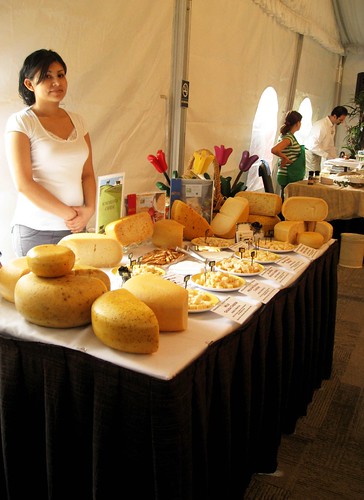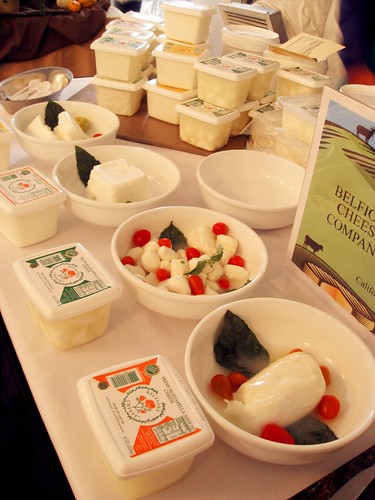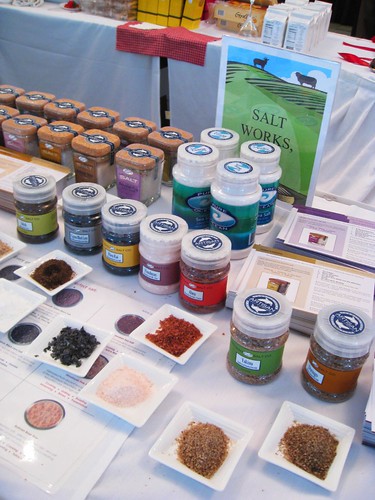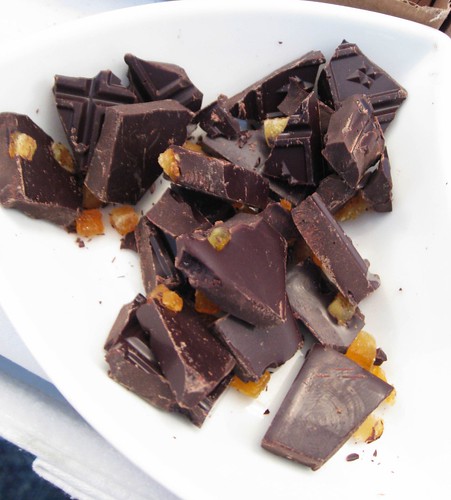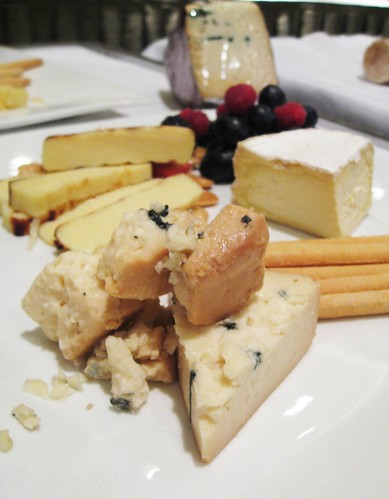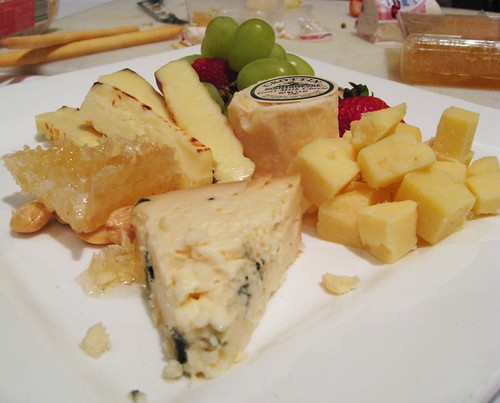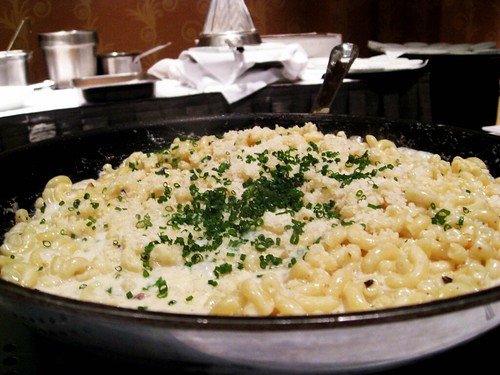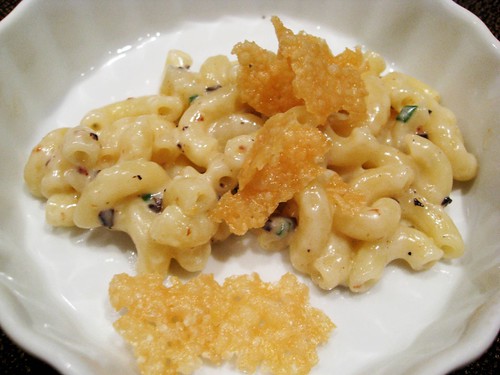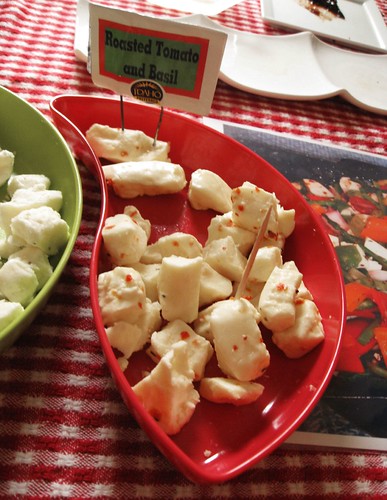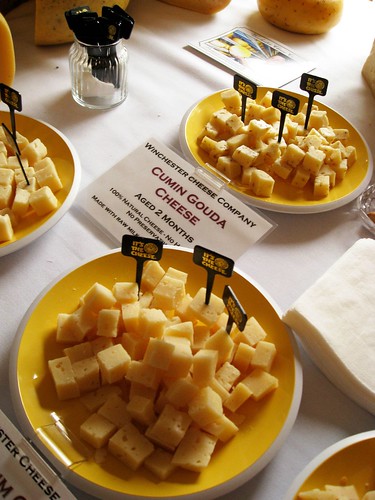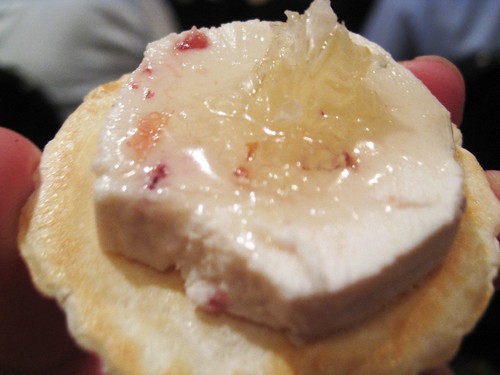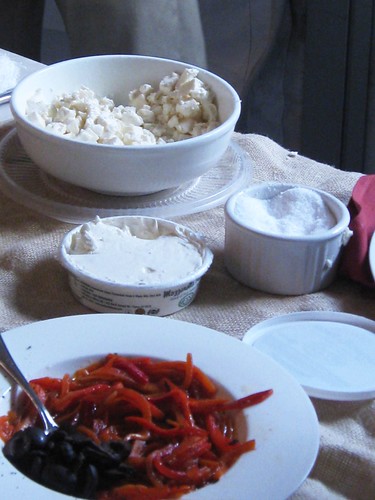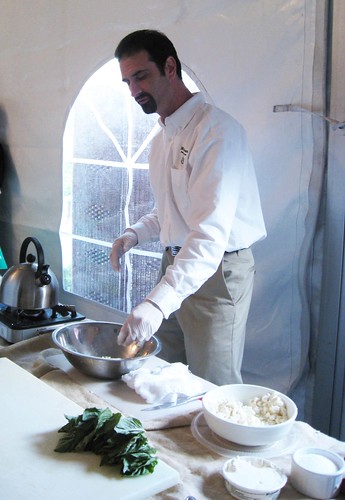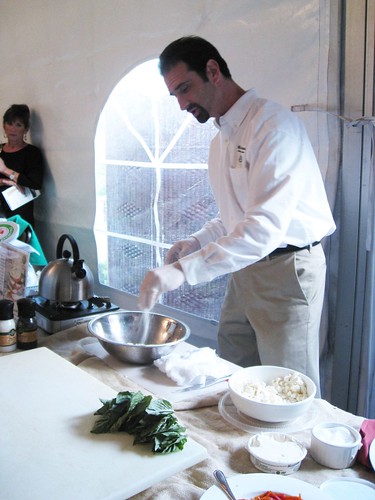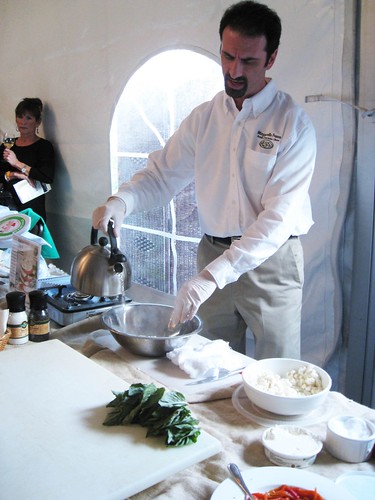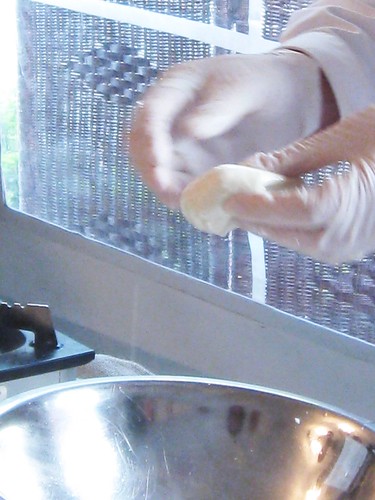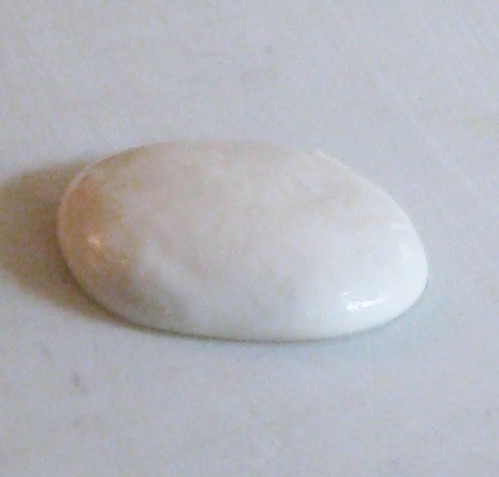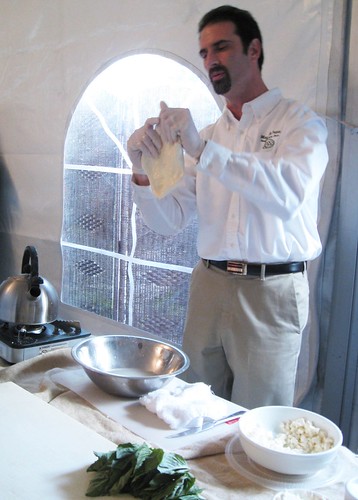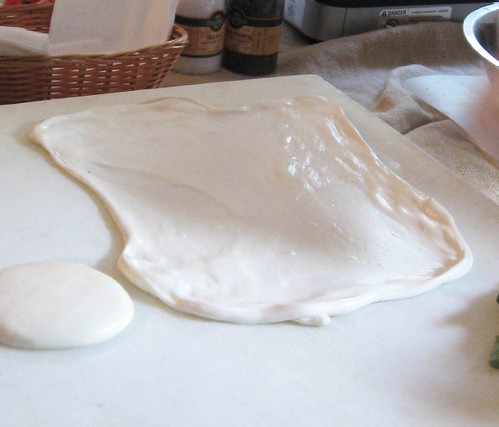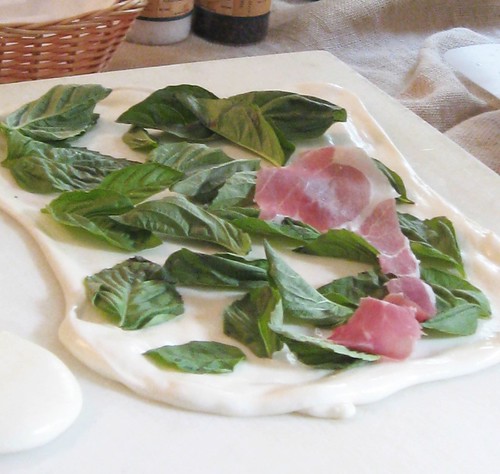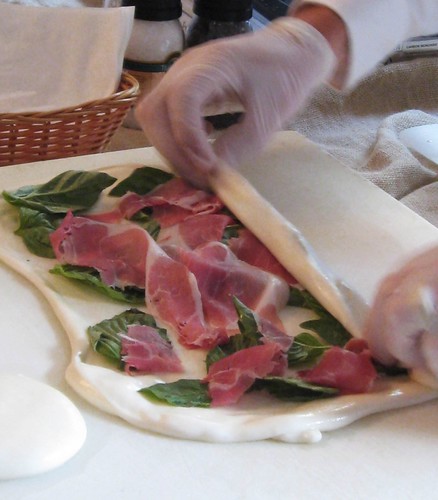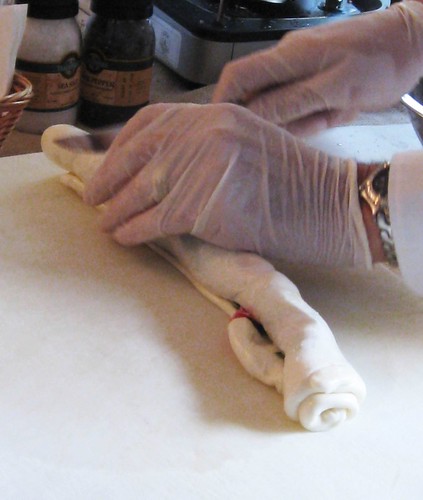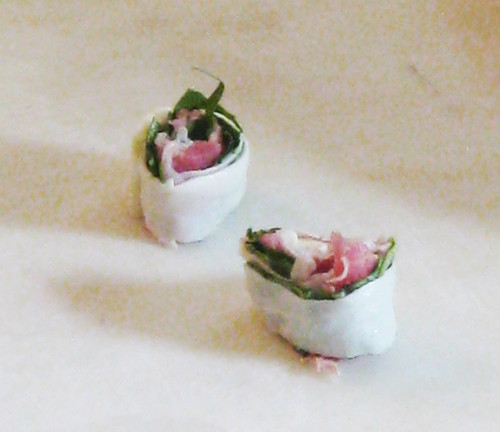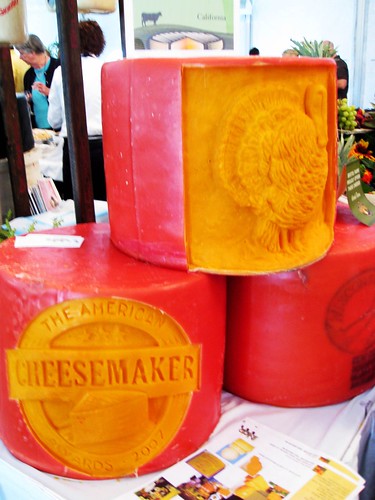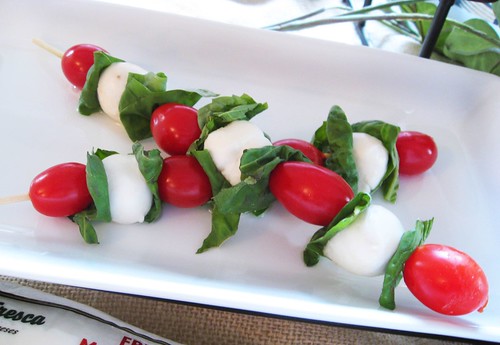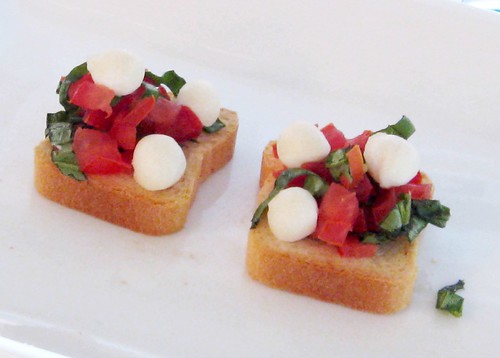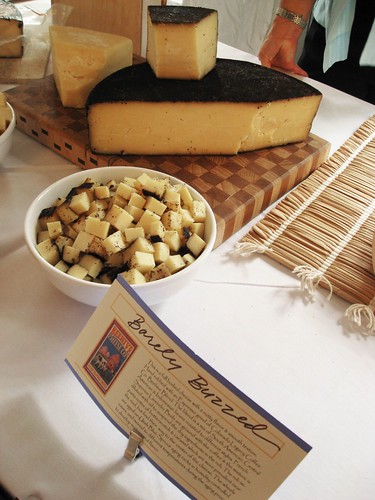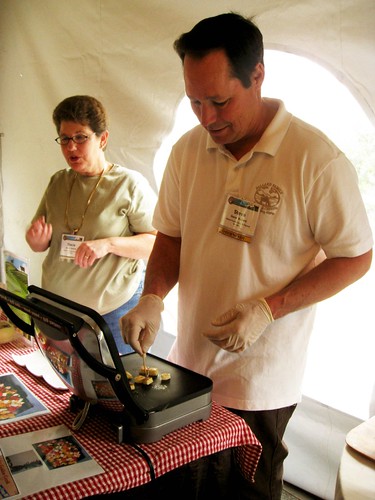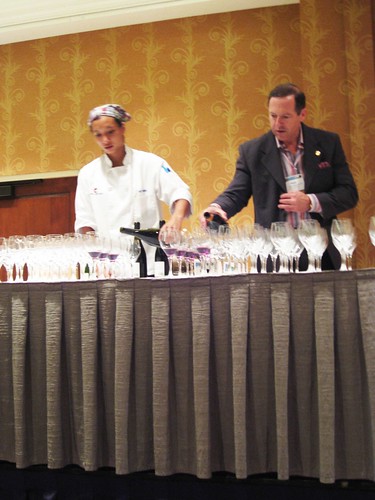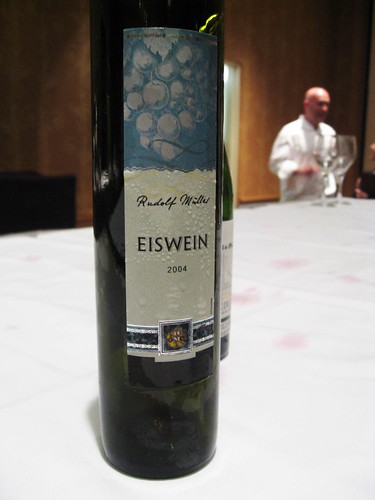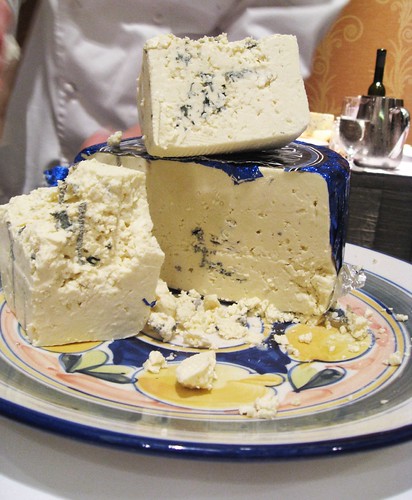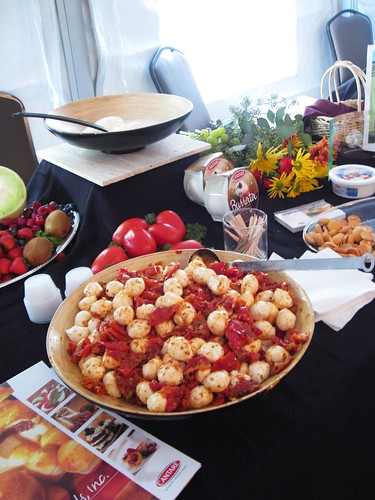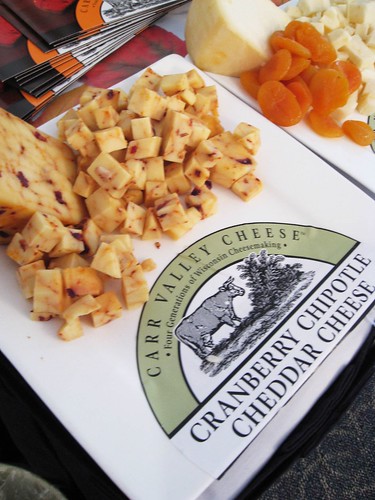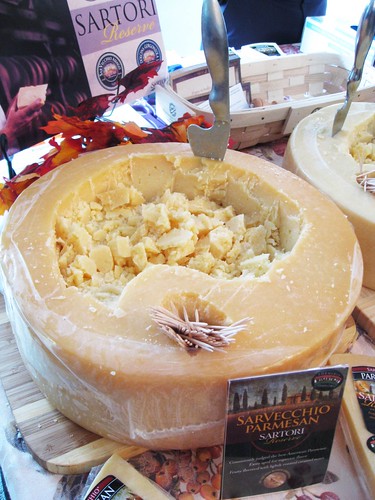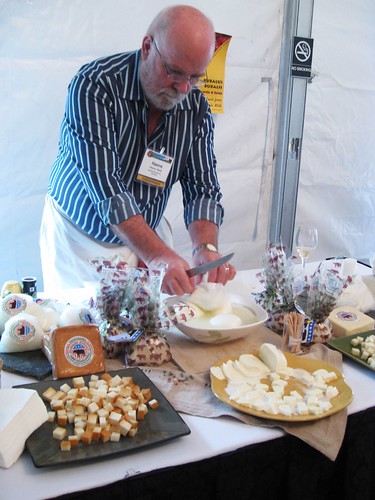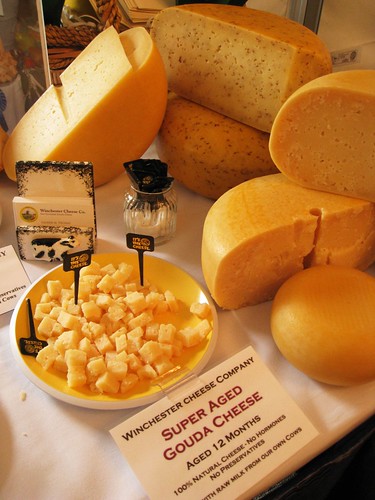 As a part of my continuing series exploring Japanese dining in the South Bay, next on the agenda was a visit to Otafuku in Gardena, CA. Otafuku is a soba house that is supposedly so good that fans from all over LA will make the trek to this unassuming restaurant just to experience what they consider to be soba noodle greatness. So what makes Otafuku so special? In short, its owner, Seiji Akutsu.
As a part of my continuing series exploring Japanese dining in the South Bay, next on the agenda was a visit to Otafuku in Gardena, CA. Otafuku is a soba house that is supposedly so good that fans from all over LA will make the trek to this unassuming restaurant just to experience what they consider to be soba noodle greatness. So what makes Otafuku so special? In short, its owner, Seiji Akutsu.On the menu, there are two types of soba noodles, the seiro (sarashina soba) and the zaru (brown soba). What's unique about both noodles is that Seiji uses only bottled spring water to mix in with the flour and then kneads the dough by hand in small batches. This is no small task since you have to take into account the temperature and the air's humidity when deciding on the amount of water to be mixed with the flour to ensure the best results for the dough. While both noodles are made the same way, the difference lies in the type of flour used. The seiro uses gozen-ko (flour milled from the white buckwheat heart) while the zaru is made with ichiban-ko (second milling flour) and blended with a small amount of wheat flour.

What drew me to Otafuku for my first time soba noodle experience really had to do with how I viewed Seiji Akutsu to be a real artisan, who really took care in making his creations, which in this case were noodles. Considering all the rave reviews I read, I definitely was looking forward to my meal there.
Once we were were seated and upon perusing the menu, my party opted to share a few dishes which included the pickled vegetables, the sea eel tempura, roasted seaweed and vegetable tempura. When it came to the noodles, some of us ordered the seiro noodles and others ordered the zaru noodles. By the way, the words "seiro" and "zaru" have more to do with the type of basket the noodles are served in, not the actual name of the noodles. As noted earlier, the seiro are the sarashina soba noodles while the zaru are the brown soba noodles.
 First, let me talk about our group's shared dishes where the two standouts were the sea eel and vegetable tempura items. The tempura in general is definitely the best tempura I've ever had. The batter was crunchy, light and non-greasy. When you take a look at my photos below, you'll see that a light hand was used, just enough to give you a nice crunch without you having to eat your way through a thick batter before you even taste the "filling" inside. As for the eel, the meat was delicate and moist, which isn't surprising since Seiji purchases only fresh eel for this dish. The vegetable tempura was cooked perfectly and perfect for me, is when the vegetables still retain a little bit of crispness and aren't overcooked.
First, let me talk about our group's shared dishes where the two standouts were the sea eel and vegetable tempura items. The tempura in general is definitely the best tempura I've ever had. The batter was crunchy, light and non-greasy. When you take a look at my photos below, you'll see that a light hand was used, just enough to give you a nice crunch without you having to eat your way through a thick batter before you even taste the "filling" inside. As for the eel, the meat was delicate and moist, which isn't surprising since Seiji purchases only fresh eel for this dish. The vegetable tempura was cooked perfectly and perfect for me, is when the vegetables still retain a little bit of crispness and aren't overcooked.Soon our noodles arrived. I had ordered a special combo which consisted of brown soba noodles, a shrimp tempura rice bowl, a small side of pickled vegetables, a dipping sauce with a small plate of green onions and wasabi. There were also leaves in my bowl of dipping sauce and I wasn't sure what they were. Maybe, shiso leaf? One thing that surprised me was that I could barely tell the difference between the seiro soba noodles and the zaru brown soba noodles. I was expecting the brown soba noodles to be…well…more bro
 wn, a nutty brown. Side by side, you can definitely see a brownish tinge to the brown soba noodles, but the color difference between the two soba noodles was definitely very subtle.
wn, a nutty brown. Side by side, you can definitely see a brownish tinge to the brown soba noodles, but the color difference between the two soba noodles was definitely very subtle.Before even starting, I had to be tutored to add some of the green onions and wasabi to the sauce and then dip the noodles into the sauce before slurping them into my mouth. At first taste, I enjoyed the flavors of the sauce that coated the surface of the noodles, which were firm and definitely to my liking. I also detected a hint of nuttiness which I liked, but what I was expecting was something bolder and earthier. What I got seemed more refined and subtle.
Being a soba noodle newbie, I have to say that my soba experience at Otafuku was a bit befuddling. There's certainly nothing wrong with refined and subtle. After all, I enjoyed my noodles to the last bite, but I do wonder if there are regional differences or just preferential differences in regards to how soba noodles are made. When I have seen soba noodles ordered elsewhere, they looked thicker and were also more beige or light brown in color. Compared to the soba brown noodles at Otafuku, those noodles seem more rustic and not as elegant looking.
Although I enjoyed my zaru noodles, I wouldn't consider it a mind blowing experience. In fact, I think I was more enamored with the tempura dishes than anything else. I left thinking that I definitely need to expand my horizons. I honestly have read about people making pilgrimages to Otafuku for their soba and the only way I'm going to understand why is to try other soba noodles in comparison. If anyone has any suggestions for places that serve great soba noodles, I'd love to hear about them.
To see pics, go to:
http://www.flickr.com/photos/la_addict/sets/72157602520001951/
Otafuku
16525 S Western Avenue
Gardena, CA 90247
(310) 532-9348



















































